
A semi-scientific ranking of Toronto’s 158 neighbourhoods
Photography by Patrick Marcoux
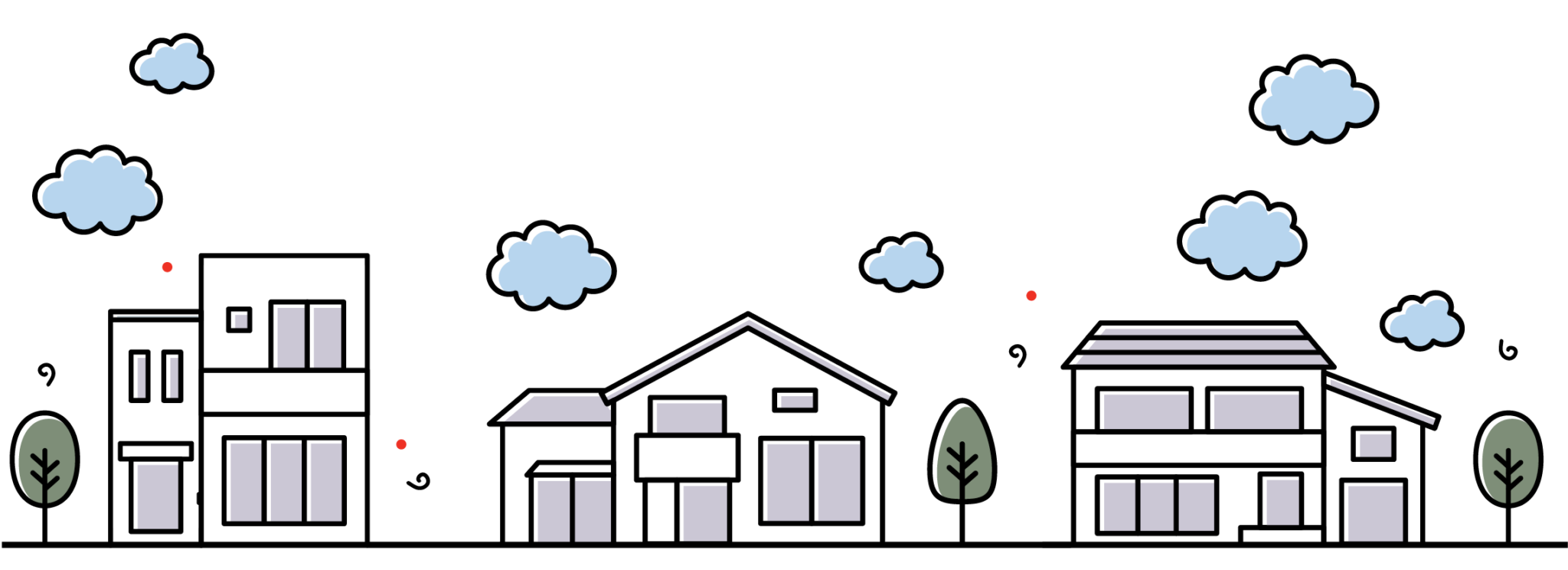
FIVE YEARS HAVE PASSED since we last ran our neighbourhood rankings, and what a transformation there’s been. The pandemic radically altered how we live, work and commute. Downtown lost its mojo (for a time, anyway), and the suburbs gained new appeal. Change proliferated in other ways, too. The city is bursting with new transit projects, condo towers, Michelin-star restaurants, rooftop farms, hypermodern shopping complexes—even a shiny new hospital up in Vaughan. Once-derelict stretches are now brimming with chic retail and cafés. A thriving Pilates studio has replaced that abandoned storefront next door. The empty lot on the corner is now a curated bodega.
Last year, owing in part to booming populations in some areas, city hall re-drew Toronto’s map to include 34 new neighbourhoods. Simultaneously, fresh census data provided surprising insights into every aspect of our urban existence. The short version: our neighbourhoods are evolving by the second.
To find out just how much things have changed, we partnered with Environics Analytics, one of the country’s leading data and analytics firms. Their research team compiled dozens of data points on every factor of daily life in Toronto, from the essentials (housing, health care, transit) to the nice-to-haves (bars, restaurants, green space). The results measure how each of the city’s 158 neighbourhoods stacks up. Some of the highest scorers are what we expected. But there are also plenty of revelations, especially among the top 10, which are sprinkled throughout the city and include three of Toronto’s new neighbourhoods.
Below, we offer sketches of each of the top 10 (scores for the remaining 148 are available here). We also compiled a series of infographics and extra statistical tidbits—on crime rates, school scores, incomes and other factors—to better understand our city. Taken together, our findings show where demographics are shifting and which pockets have moved up (and down) in the rankings.
You may have your own ideas about what makes a neighbourhood great. Maybe you care more about transit than schools, or good restaurants matter more to you than affordable real estate. We thought of that and created an interactive online version, which allows you to adjust the metrics to match your preferences and generate a customized ranking.
Now, without further ado, here it is: our mostly scientific, slightly inflammatory, deeply informative portrait of this ever-evolving city. Let the showdown begin.
We scored each neighbourhood out of 100, weighting the criteria as follows:
Housing (15%): affordability (cost versus income), average primary real estate value and rate of home ownership
Community (12%): voter turnout numbers, access to community space (such as libraries and parks), outward migration and how many people report a sense of community belonging
Safety (12%): rates of all types of crimes
Shopping (10%): proximity to groceries, markets and pharmacies
Diversity (9%): people whose mother tongues are not English or French as well as first- and second-generation household population
Education (9%): number of schools per 1,000 children, proximity to child care and share of residents with post-secondary educations
Health (9%): proximity to health care, including medical services, mental health services and senior care, as well as physical activity levels among residents
Employment (8%): unemployment rates, share of residents below the poverty line and share of high-income residents
Entertainment (8%): number of bars and restaurants per capita and number of residents who attend cultural, sports and entertainment events
Transit (8%): proximity to transit, average commuting distance and number of commuters who walk, cycle, drive or take the TTC

All the data used for each ranking category were sourced from Environics Analytics (EA), Open Data Toronto (City of Toronto) and Statistics Canada. EA’s small-area statistical databases are completely developed using fully privacy-compliant sources and methods. EA compiled this data and computed the ranking scores for the 158 neighbourhoods. For further inquiries regarding this data, please contact inquiries@environicsanalytics.com. Additional data sources that were used for some of the complementary insights (not the rankings) include the Toronto Real Estate Board, the Government of Ontario, the City of Toronto, Statistics Canada and Zoocasa.


→ DANFORTH HAS HISTORICALLY been an inroad to the action, not the site of it. These days, the bustling area—and this year’s top-ranking neighbourhood—spoils residents with quality restaurants, bars, shopping and schools, all packed within its boundaries, which stretch from Pape to Woodbine. What changed? It’s the type of place that has always been quietly, consistently good—scoring high on almost every metric, particularly in education, employment and entertainment. Beyond the vibrant main drag, families are drawn to the abundance of green space (like nearby Withrow Park, to the south), the peaceful quiet of its leafy inner streets and, in a city of skyrocketing real estate prices, the relative affordability of its housing. Danforth also scores high for access to grocery stores and pharmacies as well as its proximity to Michael Garron Hospital. Plus, with Line 2 transecting the area, residents can hop on the TTC and be downtown or across town in minutes.






→ A DECADE AGO, Vogue magazine named WQW one of the world’s coolest neighbourhoods. The strip, which extends from Bathurst to Dovercourt, isn’t about to relinquish the crown any time soon. It remains a reliable arbiter of taste, well-loved for its quirky local shops, buzzy bars and restaurants, and iconic boutique hotels. Today, it’s usually the first to get cult-fave establishments: skin-care bar Formula Fig, inventor of the aptly dubbed “cool girl facial,” and sustainable Canadian clothing brand Kotn both opened their flagship Toronto locations in the area. The neighbourhood, which scores high in the entertainment and shopping categories, is also a frequent home to popular-on-TikTok retail pop-up the Welcome Market and the eponymous Queen West Art Crawl. While the area loses points for affordability, it scores high for commuters of all types thanks to the Queen streetcar, a robust network of bike lanes and many walkable streets.









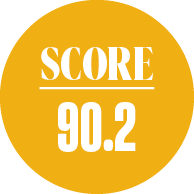
→ RUNNYMEDE-BLOOR WEST is the perfect alchemy of lively and quiet. The expanse of Bloor that runs through the neighbourhood is chock full of independent shops (like the beef-centric Meaty Eats, run by fifth-generation butchers), popular restaurants (including Queen’s Pasta Café, a neighbourhood anchor) and great bars (notably, English-style pubs Shakey’s and Bryden’s). The surrounding area, meanwhile, is a paradise for families, offering good schools (more than a dozen) and an oasis of relative affordability—especially compared with nearby neighbourhoods. Plus, it’s close to Roncesvalles, the Junction and the vast, vibrant green space that is High Park. With easy access to the core via Jane and Runnymede stations, the area also scores high on transit.
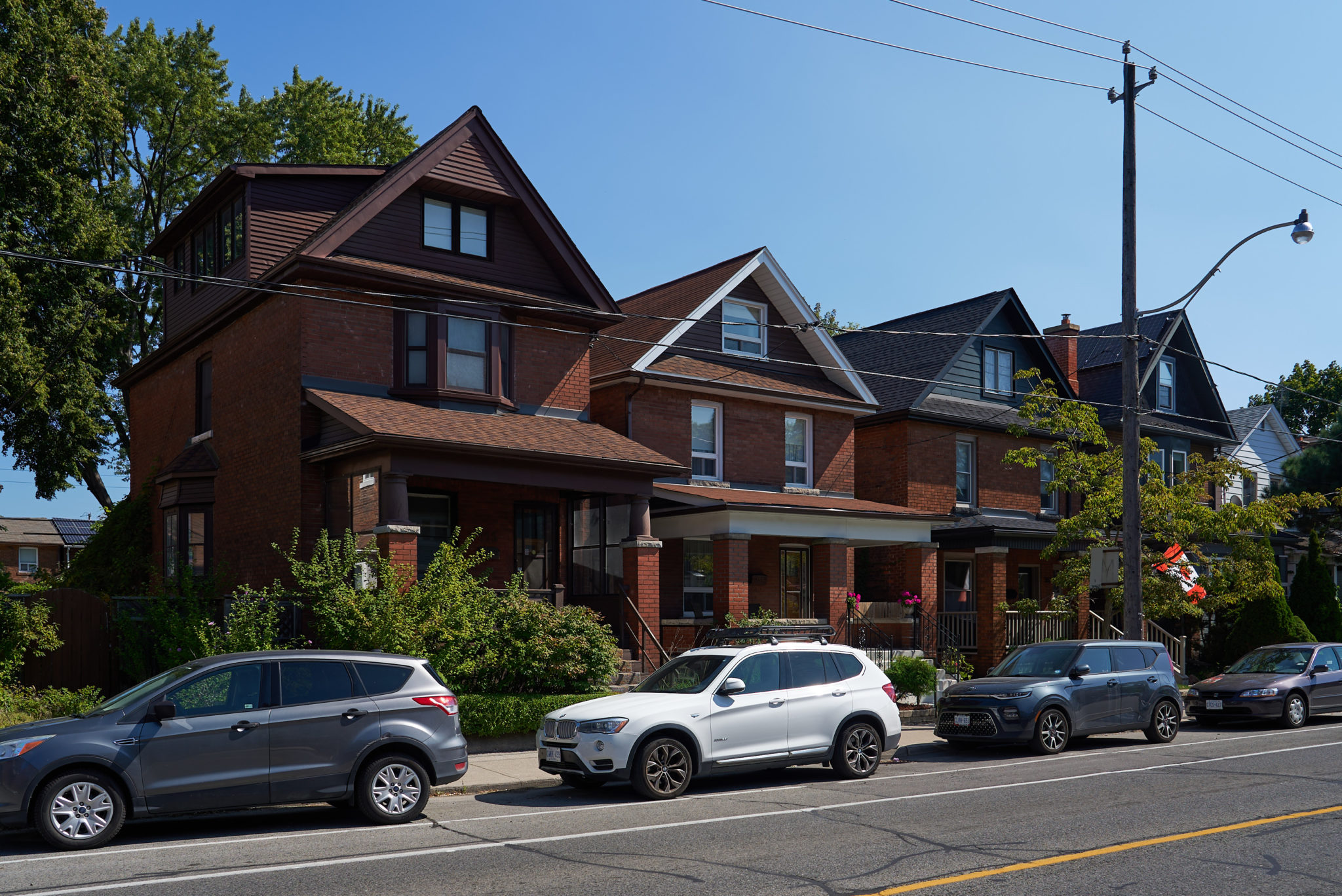




→ AVONDALE, which has its locus at Yonge and Sheppard, is a mix of shiny high-rises and sleepy North York bungalows. The neighbourhood’s main strip is also emerging as a food destination, with outposts of super popular chains like Kinka Izakaya as well as local gems like Han Ba Tong and Sushi One. And it’s growing denser thanks to an ever-increasing number of new condos. What Avondale lacks in affordability, it makes up for in convenience for commuters of all kinds: it’s close to the 401, the subway horseshoe and Line 4, and earlier this year, city council made the bike lanes on north Yonge Street permanent.
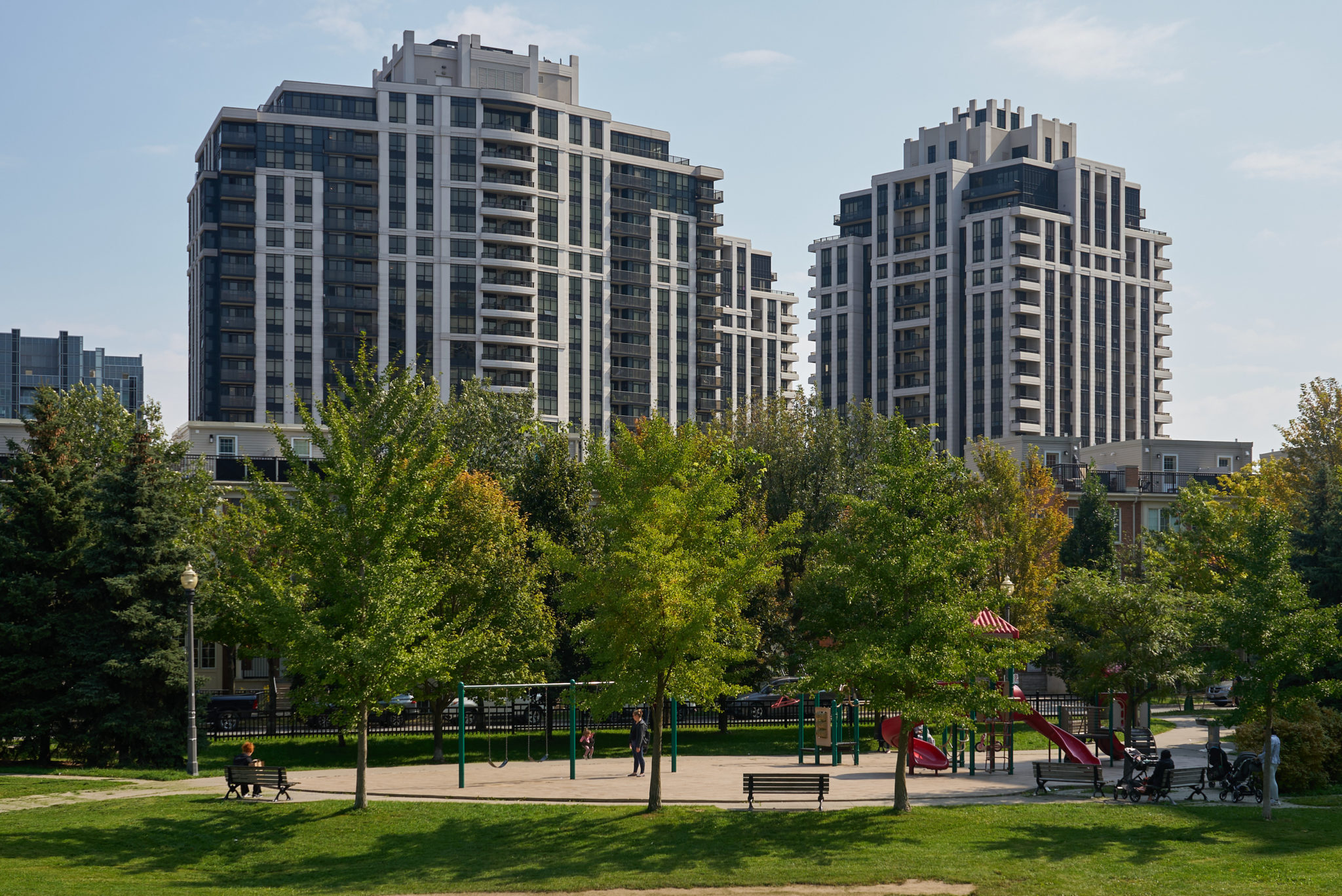




→ WELLINGTON PLACE is a great fit for the many affluent young professionals who populate the area. It’s close to just about everything: the necessities, like hospitals and groceries, as well as the fun stuff, like bars and restaurants (it has the most per capita in the city). Contributing to the area’s explosive expansion is the Well, downtown’s new residential and retail mega-complex, which has added more condos, shops, restaurants and gyms to an already robust mix.
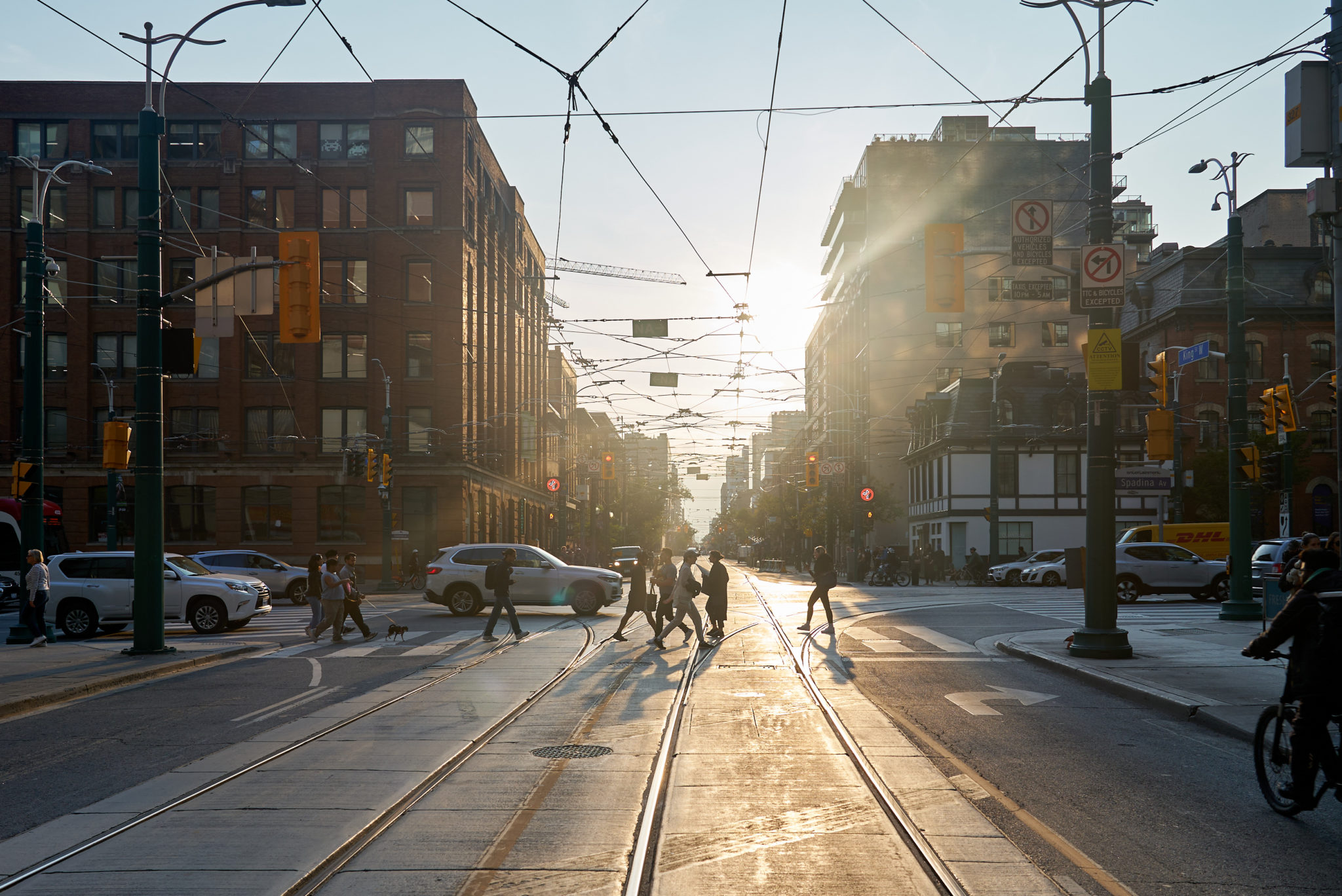

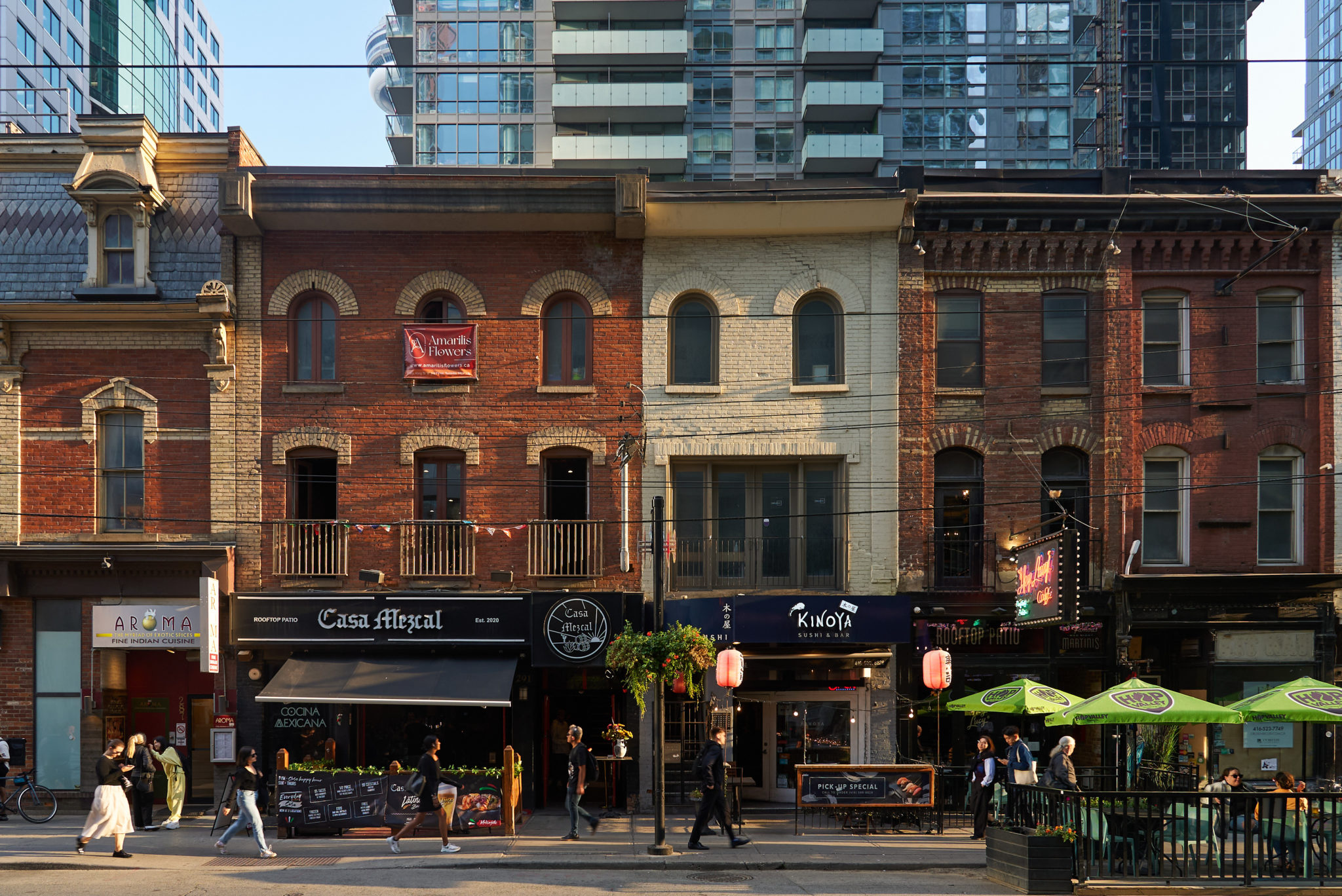


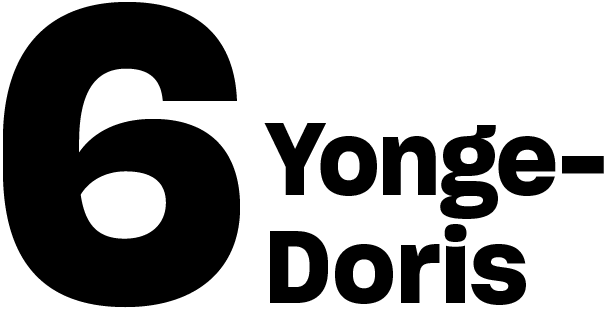
→ A SLIM STRIP anchored between Sheppard and Finch stations, Yonge-Doris is emerging as one of the city’s hottest neighbourhoods for real estate. Better yet, it’s comparatively affordable, attracting many students and young professionals. The neighbourhood also receives strong scores for safety, transit (commuters are within a 15-minute walk of the subway and the GO Transit system) and public spaces, like the nearby Mel Lastman Square and a scattering of parkettes. There are also endless entertainment options (with four nearby karaoke bars open until the wee hours), and in March, South Korea’s famous bakery and café chain, Paris Baguette, launched here to test Canadian waters.
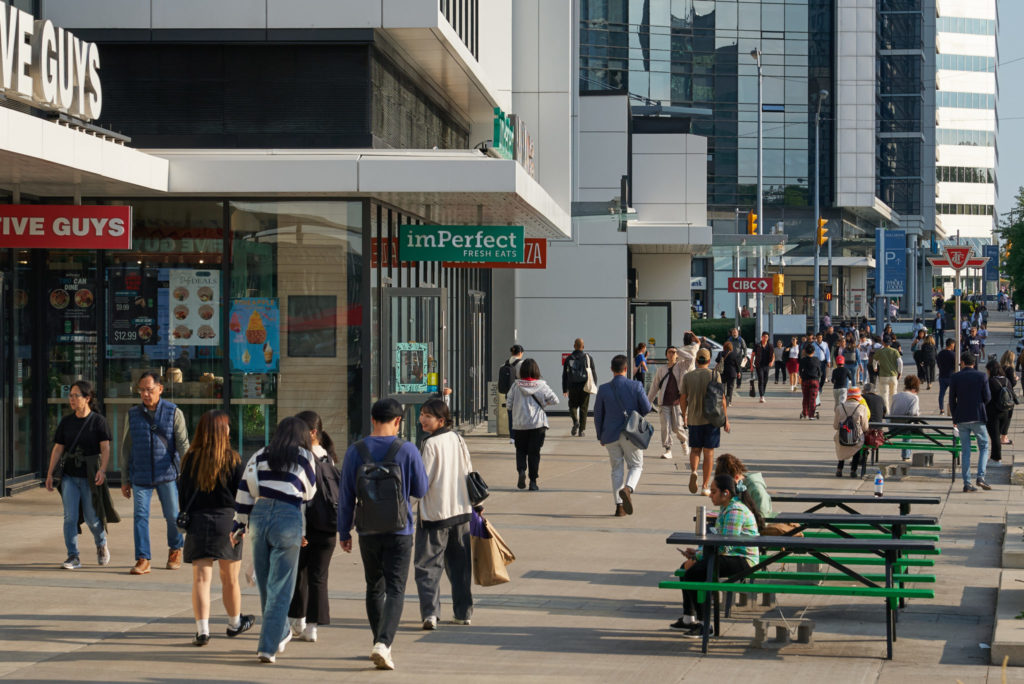

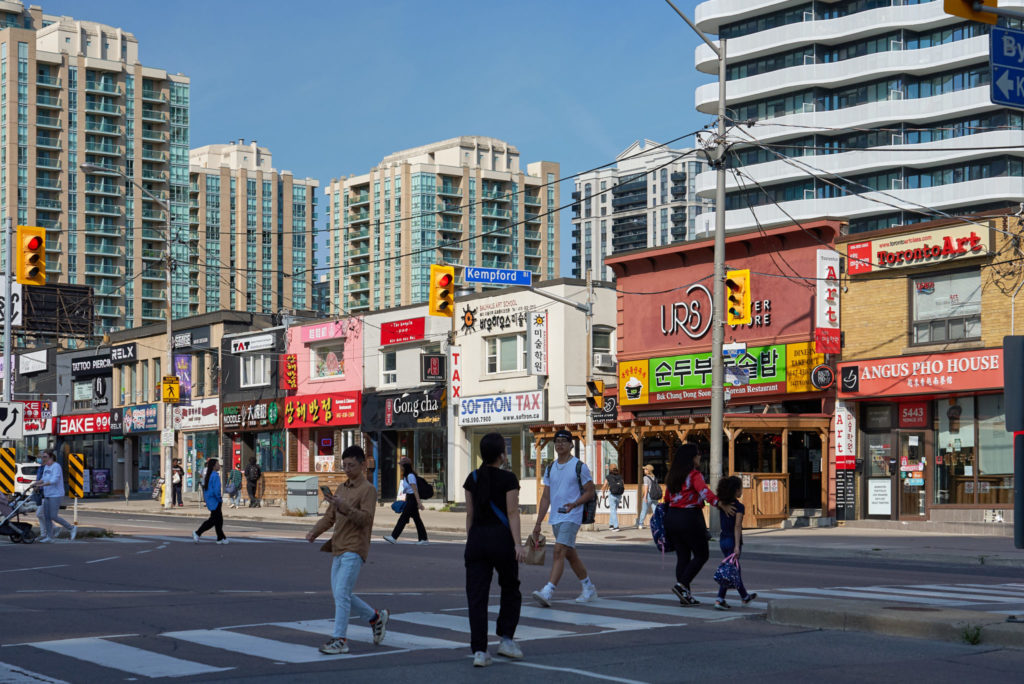
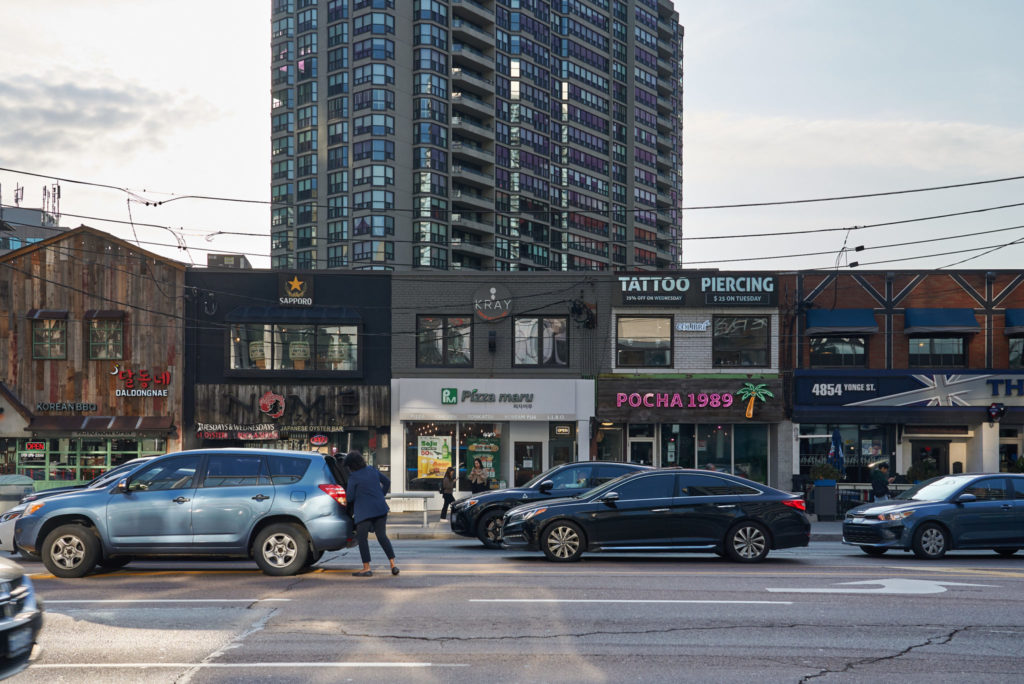




→ THIS CITY-DESIGNATED heritage district has the highest concentration of perfectly preserved Victorian houses in North America. One downside: they aren’t cheap—though planned mid- and high-rise developments will help bring average prices down a smidge. The neighbourhood also loses points in the crime and diversity categories, but it scores among the best on schools, shopping and transit.






→ AVONDALE, which has its locus at Yonge and Sheppard, is a mix of shiny high-rises and sleepy North York bungalows. The neighbourhood’s main strip is also emerging as a food destination, with outposts of super popular chains like Kinka Izakaya as well as local gems like Han Ba Tong and Sushi One. And it’s growing denser thanks to an ever-increasing number of new condos. What Avondale lacks in affordability, it makes up for in convenience for commuters of all kinds: it’s close to the 401, the subway horseshoe and Line 4, and earlier this year, city council made the bike lanes on north Yonge Street permanent.




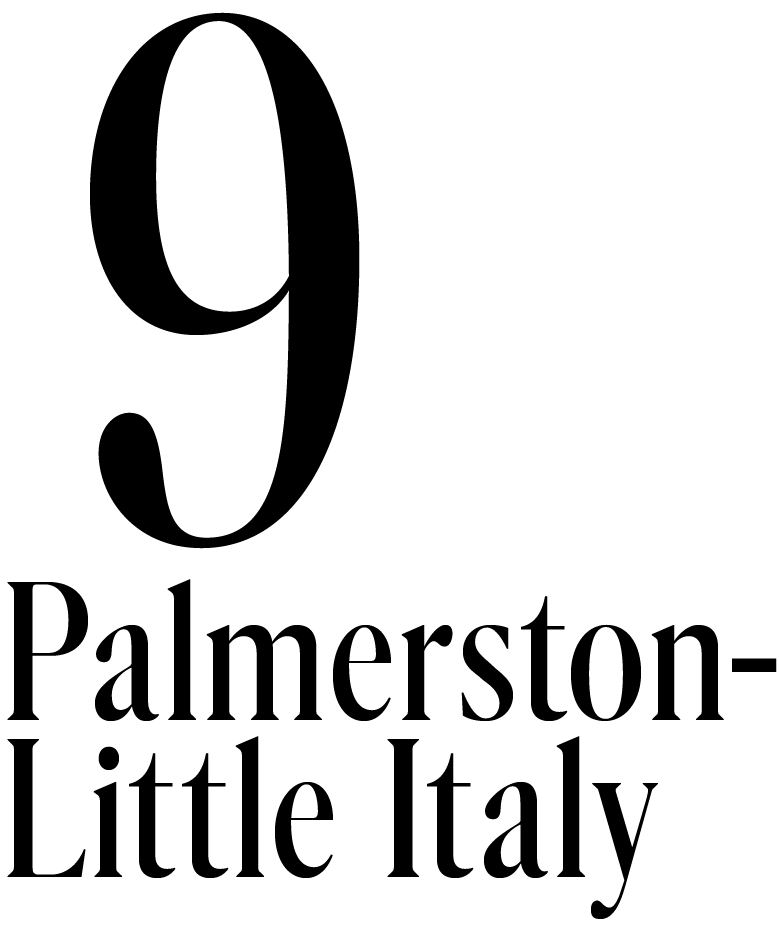

→ SANDWICHED BETWEEN Bloor West to the north and College to the south, Palmerston-Little Italy is a good fit for those who prefer the car-free life: super walkable, bikeable (with roughly 10 kilometres of lanes) and transit-friendly. A blend of good patios, mainstays like Café Diplomatico (which just celebrated its 55th anniversary) and shiny new developments like the Mirvish Village enclave (in its final stage of construction) make it the perfect place for a Sunday stroll.





→ TRINITY-BELLWOODS is anchored by its namesake park, home to a rec centre, tennis courts and a leash-free zone for the city’s hippest pups. The area is brimming with people in their mid-20s to 40s who work in the arts and culture sector. And on Saturday night, there are few places in the city as packed as Ossington’s restaurant row—a gastro utopia like no other, which lifts Trinity-Bellwoods’ score into this year’s top 10.





Housing

→ AFFORDABLE HOUSING has become oxymoronic in this city. Rent is rising everywhere, but particularly in neighbourhoods stacked with newer construction (and, thus, no rent protection). Interest rates are sky high, and even in a cooling market, Toronto’s home prices can be staggering. Yet this year’s real estate stats reveal that it isn’t all bad news. The biggest takeaway: buyers can still get a home for under $1 million—if they know where to look.

The highest percentage of owners live in
Centennial Scarborough
91.8%
Milliken
87.4%
Bridle Path-Sunnybrook- York Mills
87%
Highland Creek
85.7%
Princess-Rosethorn
84.6%
The highest percentage of renters live in
North St. James Town
88.6%
Thorncliffe
85.3%
South Parkdale
84.1%
North Toronto
80.8%
Church-Wellesley
75.3%
The neighbourhoods with the most newly constructed housing
(built 2016 or after)


And the oldest
(pre-1961)


The Annex is the city’s only neighbourhood where the average home price has dropped in the past five years. It’s down 6.64 per cent—from $2,183,048 to $2,042,130.

Condo prices soared across the city in the past five years but are now poised to level off (and even, perhaps, drop). They jumped the most in Oakridge and Birchcliffe-Cliffside, where the average cost is now $672,400. That’s 110.13 per cent higher than it was in 2018.

East vs. West
Real estate is crazy expensive everywhere in the city, but the east end is slightly cheaper than the west, averaging $1,314,644 versus $1,369,053 this year for all types of residential property—including condos. The long-reigning most expensive neighbourhood in the east is Playter Estates-Danforth, which averages $2,097,500. In the west, it’s Kingsway South, which averages $2,310,389.
Downtown vs. Suburbs
Thanks to a heavy concentration of condos, average property prices are cheaper downtown ($920,661) than they are north of the 401 ($1,153,280). The most expensive neighbourhood in the core is Cabbagetown-South St. James Town, which averages $1,420,208. In the burbs, it’s Bayview Woods-Steeles at $1,919,273.

The neighbourhoods that are almost entirely high-rise

And the neighbourhoods that have none

The cheapest
rent is in
Yorkdale-Glen Park
$1,122
(what tenants are currently paying, on average, for a one-bedroom apartment)
The most expensive rent is in
Bayview Wood-Steeles and Hillcrest Village
$2,365
(what tenants are currently paying, on average, for a one-bedroom apartment)
The most expensive
houses are in
Rosedale-Moore Park
$4,718,000
(average detached home price)

The cheapest
houses are in
Rockcliffe-Smythe
$991,000
(average detached home price)
The fastest-rising property values are in

Scarborough Village and Guildwood
Avg. price in 2018: $936,840
Avg. price in 2023: $1,616,142
Five-year increase in
average price:
72.5%
West Hill and Centennial Scarborough
Avg. price in 2018: $737,641
Avg. price in 2023: $1,173,250
Five-year increase in
average price:
59.1%
Malvern East, Malvern West and West Rouge
Avg. price in 2018: $665,340
Avg. price in 2023: $1,016,003
Five-year increase in
average price:
57.7%
Morningside, Golfdale-Cedarbrae-Woburn and Bendale-Glen Andrew
Avg. price in 2018: $665,340
Avg. price in 2023: $1,016,003
Five-year increase in
average price:
52.7%

Stonegate-Queensway
Avg. price in 2018: $1,268,942
Avg. price in 2023: $1,928,656
Five-year increase in
average price:
52%
People

→ ONE OF THE CITY’S greatest strengths is its diverse neighbourhoods. Here are the most popular areas for new Canadians as well as the pockets with the youngest and oldest populations, the biggest and smallest households, and more families versus more singles.
Wellington Place has the highest percentage of household maintainers—the person who pays the mortgage or rent—under age 34.
64%
And Guildwood is home to the highest percentage of people over age 75 who foot the bill.
24%
Toronto’s most diverse neighbourhoods,
in terms of number of new Canadians, languages spoken and ethnic backgrounds:

1. Flemingdon Park
2.Yonge-Bay Corridor
3. Yonge-Doris
4. Westminster-Branson
5. Morningside Heights
The most singles live in


The most families live in


Weston and New Toronto are home to the highest rate of divorced people
8%

The neighbourhoods with the highest concentrations of new Canadians are

The biggest households are in Morningside Heights, where over 30 per cent of homes have five or more people living in them. It also has the highest concentration of multi-gen households, at 14.6 per cent.

Transit
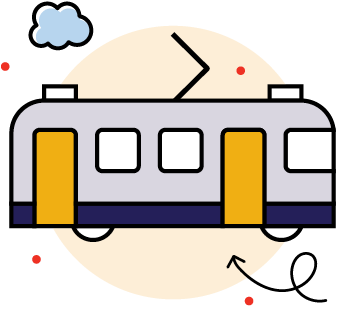
→ ONE OF THE CITY’S greatest strengths is its diverse neighbourhoods. Here are the most popular areas for new Canadians as well as the pockets with the youngest and oldest populations, the biggest and smallest households, and more families versus more singles.

Palmerston-Little Italy is home to the most people who cycle to work.
10.5%

The least reliable bus routes in the city are



Not everybody’s commute is migraine-inducing. Roughly 40 per cent of people who live in Wellington Place walk to work, the most of any Toronto neighbourhood. Yonge-Bay Corridor is a runner-up at 32 per cent.
The best neighbourhoods for transit are
1. Wellington Place
2.Yonge-Bay Corridor
3. Downtown Yonge East
4. Moss Park
5. West Queen West
The most reliable bus route in the city is

175 Bluffer’s Park, which had only 17 delays in 2022, averaging 15 minutes. The route, launched in 2018, runs between Kennedy station and Bluffer’s Park.
The neighbourhoods with the highest percentages of car commuters are


The neighbourhoods with the most people who commute via the TTC are


Money

→ TORONTO IS, on balance, a wealthy city—the fifth richest in North America—but the income gap is growing. Each neighbourhood’s economic health is measured by its employment stats, household income and poverty rates. The numbers also show who works where, which areas are hurting for jobs and which are economic gold mines. Hint: the downtown is rebounding.
The downtown core accounts for 38 per cent of all employment in the city—the most of any area. It’s also one of the only areas where new jobs are being created, nearly 7 per cent of them thanks to Amazon’s new tech-hub office, which opened last year.

12.3%
of people who live in Little Portugal work in the creative sector, the highest concentration in the city.
The richest neighbourhoods are
Bridle Path-Sunnybrook-York Mills
$537,972
Lawrence Park South
$390,262
Rosedale-Moore Park
$350,720
Kingsway South
$324,529
Leaside-Bennington
$302,514
(average household income)
Yonge-Bay Corridor has the highest percentage of people working in health care, with 12.2 per cent of its residents employed in the industry.
The neighbourhoods with the most people in the labour force are


More than 22 per cent of people who live in Harbourfont-CityPlace work in the financial sector—making it the biggest home base for the industry.

The city has 23 areas of employment—land officially designated for clusters of businesses, like manufacturing and warehousing. In 2022, they accounted for just over 30 per cent of jobs in the city. The top five are what the city has dubbed Rexdale-Airport, South Etobicoke, Downsview, Highway 400 and Tapscott. Together, they account for 179,480 jobs.

Education

→ GOOD SCHOOLS are a big draw for families, and one measure of schools is how students fare on standard provincial tests. Unsurprisingly, the best scores are often in the wealthiest neighbourhoods, where schools are small and well-funded. Also high on the list: specialized schools, where admission is lottery based (and, this year, controversial). And for those planning to stay a while, we looked at which neighbourhoods have the most post-secondary graduates.

64%
of students who attend Thorncliffe Park Public School live in low-income housing
The neighbourhoods with the highest concentrations of post-secondary grads are


One hundred per cent of students at Ursula Franklin Academy passed the Grade 10 Ontario literacy test on their first attempt. The same goes for St. Michael’s. The city average is 83.5 per cent. Other schools that scored higher than the average are Leaside High School, where 98 per cent of students passed on their first attempt, and Cardinal Carter Academy of the Arts, located in Yonge-Doris, where 97 per cent of students did.
The neighbourhoods
that ranked highest in education are
1. Danforth
2. Cabbagetown-South St. James Town
3. University
4. Church-Wellesley
5. Downtown Yonge East
Ursula Franklin, a small-by-design competitive lottery school in High Park North, and St. Michael’s Choir School, in Moss Park, have the highest share of students who are achieving the provincial standard in advanced math. Others are James Cardinal McGuigan Catholic High School, in York University Heights, Earl Haig Secondary School, in East Willowdale, and Father John Redmond Catholic Secondary School, in New Toronto.

The schools with the biggest share of Grade 6 students achieving the provincial math, writing and reading standards are
Claude Watson School
for the Arts
in Yonge-Doris
Valleyfield Junior School
in Kingsview Village-The Westway
Rosedale Junior Public School
in Rosedale-Moore Park
Kennedy Public School
in Steeles
Whitney Junior Public School
in Rosedale-Moore Park
Crime

→ IT MAY NOT seem like it some days, but Toronto is one of the safest big cities in Canada—and consistently ranks among the top 10 in the world. More than 100 neighbourhoods score 80 per cent or higher in the safety category, which measures each neighbourhood’s crime rates. But there are pockets of outliers, notably in the downtown core, which has some of the highest rates of violent crime in the city. Meanwhile, the wealthiest neighbourhoods have some of the highest rates of property crime.
The areas with the lowest reported incidents of violent crime are
Kingsway South
29
reported incidents in 2022
Other safe bets:
Princess-Rosethorn
30
Edenbridge-Humber Valley:
39
Lawrence Park South:
40
The areas with the least reported incidents of property crime are
Guildwood
17
reported incidents in 2022
Other safe bets:
Woodbine-Lumsden
30
Caledonia-Fairbank
33
Avondale
39
Car theft is off the charts in Toronto. These neighbourhoods had the most reported incidents in 2022

And the least
A tie between Guildwood and Blake-Jones
1,122
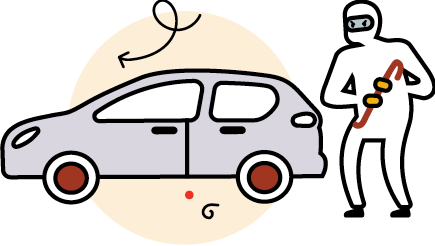
The neighbourhoods with the most reported assaults are



The safest neighbourhoods
in Toronto are
1. Steeles
2. Avondale
3. Centennial Scarborough
4. Pleasant View
5. Agincourt North

East vs. West
The east and west ends of the city are a mixed bag when it comes to crime rates. In the east end, Playter Estates-Danforth received a low score for safety (though it’s still much safer than most downtown neighbourhoods), and Centennial Scarborough ranks as one of the safest neighbourhoods in the city. In the west end, Mimico-Queensway scored poorly, with more than 340 assaults last year.
Downtown vs. Suburbs
The burbs are stacked with some of the safest neighbourhoods in the city. Meanwhile, the downtown core’s density contributes to some of the city’s highest crime rates. Among the neighbourhoods ranking poorly for safety: Moss Park, Yonge-Bay Corridor and St. Lawrence-East Bayfront-The Islands.
This story appears in the November 2023 issue of Toronto Life magazine. To subscribe for just $39.99 a year, click here. To purchase single issues, click here

